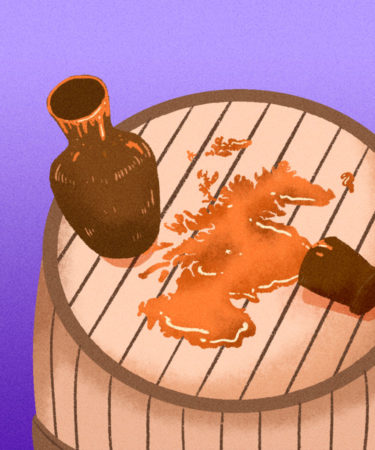In the early days of Scotch whisky, Ferintosh distillery stood above the rest. Founded in the late 17th century, the distillery and its whisky were believed to outshine its local competitors; and when it eventually traveled to new markets, such as London, it is said to have been the first whisky asked for by name. According to historians, despite its strong family lineage, favorable tax negotiations, and popularity abroad, Ferintosh was doomed from the start.
Ferintosh’s success — and eventually its demise — was inexorably tied to the politics of the day. Purchased in 1667 by “Grey” Duncan Forbes (the first Laird of Culloden and the patriarch of the prominent Forbes family), Ferintosh was burned down in 1688 by the Jacobites, the Catholic supporters of King James II (or King James VII of Scotland), who had recently been forced to abdicate the throne. The arson was an act of revenge against Forbes, who supported King James’s Protestant successor, King William.
With the distillery in ashes, Grey Duncan Forbes’ grandson, Duncan Forbes (the third Laird of Culloden), petitioned the Scottish Parliament to provide the family with restitution. The Protestant-supporting members agreed, giving Forbes an exemption from excise duty “in perpetuity.” Forbes’ annual excise duty would have been an estimated £40,000 (around £6 million by today’s standards), and without it, the family owed a simple annual fee of about £26.
Unsurprisingly, “the ‘privilege’, as it was known, gave it a huge commercial advantage,” says Charles Maclean, Scotch whisky historian. Unburdened by the taxes faced by competitors, Ferintosh was able to grow uninhibited, increasing production capacity and eventually building satellite locations throughout the region. By 1750, the distillery’s unchecked growth had resulted in the formation of seven villages, all of which relied on Ferintosh for employment.
“By the late 1760s, two-thirds of all the legal whisky produced in Scotland came from the Ferintosh distilleries,” author Neil Wilson writes in the 2018 article “The Forbes Family of Ferintosh.” By 1780, Ferintosh was producing 562,500 liters of whisky, up from 187,000 liters in 1763, more than tripling its whisky production in 17 years.
As with modern-day corporations that avoid paying taxes, Ferintosh’s success severely disrupted the balance of the industry. “The other licensed distillers got really pissed off,” Maclean tells VinePair, “and they were very powerful and lobbied parliament in London to have the dispensation removed.”
Hoping to settle the issue, Arthur Forbes (the 7th Laird of Culloden) proposed to Parliament that the “privilege” be revoked in exchange for a lump-sum payment. The government agreed, and the Forbes family received a settlement of £20,000. However, they gravely miscalculated. Ferintosh’s income under “privilege” was far greater than how much it earned with taxes reinstated, and the distillery closed within a year.
While Fernitosh’s closure was a blow for a great many admirers, perhaps none was as aggrieved as the famed Scottish poet Robert Burns, who in 1784 wrote the poem “Scotch Drink”:
Thee, Ferintosh! O sadly lost!
Scotland lament frae coast to coast!
Now colic grips, an’ barkin hoast
May kill us a’;
For loyal Forbes’ chartered boast
Is tae’en awa?
